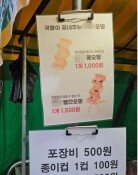The minimum wage for 2024 is set at 9,860 won
The minimum wage for 2024 is set at 9,860 won
Posted July. 20, 2023 08:04,
Updated July. 20, 2023 08:04
The minimum wage for 2024 has been set at 9,860 won per hour, marking a 2.5 percent increase of 240 won compared to this year. Translated into a monthly wage for 209 working hours, it amounts to 2.06 million won. There was considerable anticipation regarding whether this year’s minimum wage decision would surpass the 10,000-won threshold. However, due to strong opposition from small-and-medium-sized enterprises and the self-employed, citing financial difficulties, the increase was curtailed, making it the second-lowest increase since the 1.5 percent raise in 2021. After an intense all-night marathon meeting lasting over 15 hours, the Minimum Wage Committee eventually settled on the 2024 minimum wage at 6 a.m. on Wednesday. Notably, the labor and management representatives failed to reach a consensus and resorted to a vote to finalize the decision.
The process of determining the minimum wage has always been challenging, but this year’s proceedings were particularly grueling. The initial meeting was canceled due to conflicts between the labor sector representative and the government representative. Furthermore, last month, a labor representative was arrested for confronting the police during a high-altitude sit-in protest and was subsequently dismissed from the position. As a gesture of protest against the Committee’s decision, fellow labor representatives withdrew from the meeting. The final decision on the minimum wage was reached well after the statutory deadline, taking 110 days, making it the longest time ever spent in reaching a resolution. During this period, the labor sector advocated for a 26.9 percent increase, while the business sector insisted on maintaining the status quo. Despite exchanging proposals ten times, the two sides failed to reach an agreement.
The annual trilateral dispute and confrontation have become customary due to inherent flaws in the system governing the minimum wage decision-making process. The Minimum Wage Committee consists of 27 members, with nine each from the labor, business, and government sectors. When the labor and business representatives fail to reach a compromise on their proposed increase rates, government representatives have reached an agreement on the minimum wage decision only seven times and have met the statutory deadline on just nine occasions.
The government representatives, so-called “public interest representatives,” often propose an increase rate aligned with the government’s policy or stance, fueling more uncertainty. For instance, in the past, government representatives advocated for a two-digit figure increase for two consecutive years, despite facing significant employment challenges. In recent years, the government representatives have suggested arbitrary increase rates based on economic indicators such as growth rate and inflation forecast, drawing opposition from both labor and business. The absence of a reasonable and fair standard for determination leaves neither the business sector, which complains about increased financial burdens, nor the labor sector, which denounces the decision as a de facto reduction of rewal wages, satisfied.
To avoid future deadlock in the minimum wage decision-making process, an overhaul of the current system is necessary. Learning from advanced countries’ models and reducing needless conflicts can lead to more reasonable and foreseeable decisions. The development of an objective standard would prevent politically biased decisions as well. The current minimum wage decision system, which has been in place for 35 years, is no longer adequate for today’s rapidly transforming job environment and labor-management culture.
Headline News
- Joint investigation headquarters asks Yoon to appear at the investigation office
- KDIC colonel: Cable ties and hoods to control NEC staff were prepared
- Results of real estate development diverged by accessibility to Gangnam
- New budget proposal reflecting Trump’s demand rejected
- Son Heung-min scores winning corner kick







